The whole process of 3kw off grid solar system design
 Apr 07,2022
Apr 07,2022

 Rekesun
Rekesun
Off grid photovoltaic power generation systems are widely used in remote mountainous areas, non-electric areas, islands, communication base stations and street lamps. The system is generally composed of a photovoltaic array composed of solar cell components, a solar control inverter integrated machine, a battery pack, and a load. The photovoltaic array converts solar energy into electric energy under the condition of light, and supplies power to the load through the solar control inverter integrated machine, and charges the battery pack at the same time; when there is no light, the battery supplies power to the solar energy control inverter integrated machine, and then supplies AC load power supply.
Introduction of main components of 3kw off grid solar system
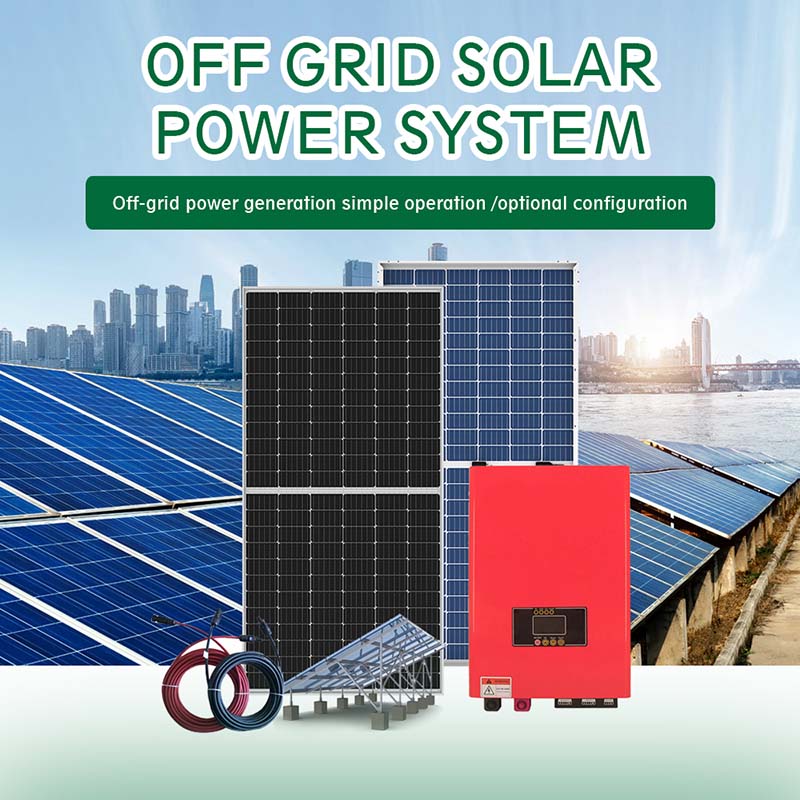
1- Photovoltaic modules
The main part of the 3kW photovoltaic off-grid power supply system is also the most valuable component in the solar power supply system. The photovoltaic module is a solar power generation device that directly converts sunlight energy into DC power. According to the different requirements of users for power and voltage, several photovoltaic modules are connected in series (to meet the voltage requirements) and parallel (to meet the current requirements) to form a power supply array to provide greater electrical power. The power generation of the solar cell increases proportionally with the increase of the sunlight intensity. It decreases slightly as the temperature of the component surface increases. As the temperature changes, the current, voltage, and power of the battery components will also change. The negative temperature coefficient of voltage must be considered when the components are designed in series.
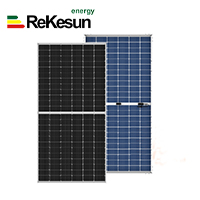 |
model | JSM-450/ 72H |
| rated power | 450w | |
| Max. Working Voltage | 42.1v | |
| Max. Operating Current | 10.69a | |
| Open-Circuit Voltage | 49.84v | |
| size | 2108*1048* 35mm | |
| weight | 25.6kg |
There are three types of photovoltaic modules: monocrystalline silicon modules, polycrystalline silicon modules, and thin-film modules. At present, monocrystalline modules occupy the mainstream and have high efficiency. The total power of monocrystalline modules in the same area is higher, but if the power is the same, the power generation of the three modules will be higher. Similar. The three components have their own advantages and disadvantages, which can be selected according to the characteristics of the project. The single crystal has high efficiency, but the unit price is also high, which can be used in occasions where the installation area is limited. The polycrystalline efficiency is slightly lower, but the price is slightly cheaper. There are various forms of thin-film modules, such as tender, light-transmitting, and colorful, which can be used in BIPV and other occasions.
2- Solar controller
The function of the controller is to track and transform the electricity from the photovoltaic modules and store it in the battery. In addition, it also protects the battery and prevents the battery from overcharging and overdischarging. Controllers are often used in off-grid systems, DC-coupled energy storage systems. The output of the controller is current, and it can also be used separately for DC loads
|
|
3000w-48vDC 220vAC 50Hz | |
| output rating | 3000w | |
| Dc input voltage | 48vDC | |
| Built-in MPPT solar controller specifications | ||
| output voltage | 220vAC 50Hz | |
| size | 486*361*175mm | |
| weight | 25.6kg | |
3- battery pack
Its main task is to store energy in order to ensure that the load consumes electricity when there is no PV. The battery is an important part of the off-grid system, and its pros and cons are directly related to the reliability of the entire system. However, the battery is a device with the shortest mean time between failures (MTBF) in the entire system. If the user can use and maintain it normally, its service life can be extended. Otherwise, its service life will be significantly shortened. At present, the usual batteries of photovoltaic energy storage systems are electrochemical energy storage, which uses chemical elements as energy storage medium, charging and discharging. The process is accompanied by a chemical reaction or change of the energy storage medium. Mainly include lead-acid batteries, flow batteries, sodium-sulfur batteries, lithium-ion batteries, etc. At present, lithium batteries and lead batteries are mainly used. Their respective characteristics are shown in the following table.
|
|
model | NPG150-12 |
| voltage | 12vDC | |
| capacity | 150Ah | |
| type | Fully sealed solar colloidal battery |
|
| service life | 6-8years | |
| size | 485*172*240 mm |
Considering the load conditions, use environment, service life and cost factors, where there are cost constraints, colloidal lead-acid maintenance-free batteries or lithium batteries are generally selected. Users should never choose inferior batteries for cheapness, because doing so will affect the reliability of the entire system and may cause greater losses.
3kw off grid solar system scheme design
The power of the off-grid inverter should be confirmed according to the user's load type and power. The maximum load of the user is a small rice cooker of 600W, a total of 400W of inductive load, and a maximum of 150W of electric fans. According to the peak value of 5 times the inductive load, so The total peak power of all loads of the user is 3kW. Considering the design margin, all loads will not start at the same time. Therefore, the inverter uses a 3kW high-frequency off-grid inverter. The electrical parameters are as follows:
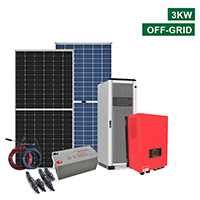 |
Single crystal photovoltaic panels | 4pcs |
| Inverter control integrated machine | 1pcs | |
| lead-acid cell | 4pcs | |
| Photovoltaic stents | 1pcs | |
| Battery cables and solar panels | 1pcs |
Parameter adjustment of 3kw off grid solar system
After each component of the photovoltaic system is installed, and before the inverter is turned on, it is necessary to check whether each component is installed correctly, whether the connection is firm, and whether there is any wrong connection or missing connection. You can also adjust some parameters and priorities according to the user's requirements, such as adjusting the protection voltage of the battery, you can adjust the depth of discharge of the battery. There are three modes for load power consumption: mains, battery priority, and photovoltaic; there are also four modes for battery charging: mains charging, photovoltaic charging, mains and photovoltaic charging, photovoltaic independent charging, etc. These modes must be run on the inverter. set before. If it is a micro-grid system with a fuel generator, it is also necessary to set the dry contact signal of the off-grid inverter. When the battery power is insufficient, the external generator will be started.



 Home
Home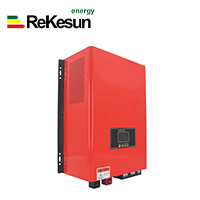
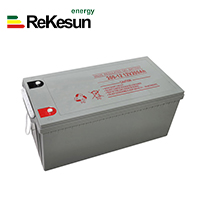
 What should I do if 10KW 96V Off Grid Solar PV Systems does not work in rainy days?
What should I do if 10KW 96V Off Grid Solar PV Systems does not work in rainy days? 







 syplighting.en.alibaba.com
syplighting.en.alibaba.com



